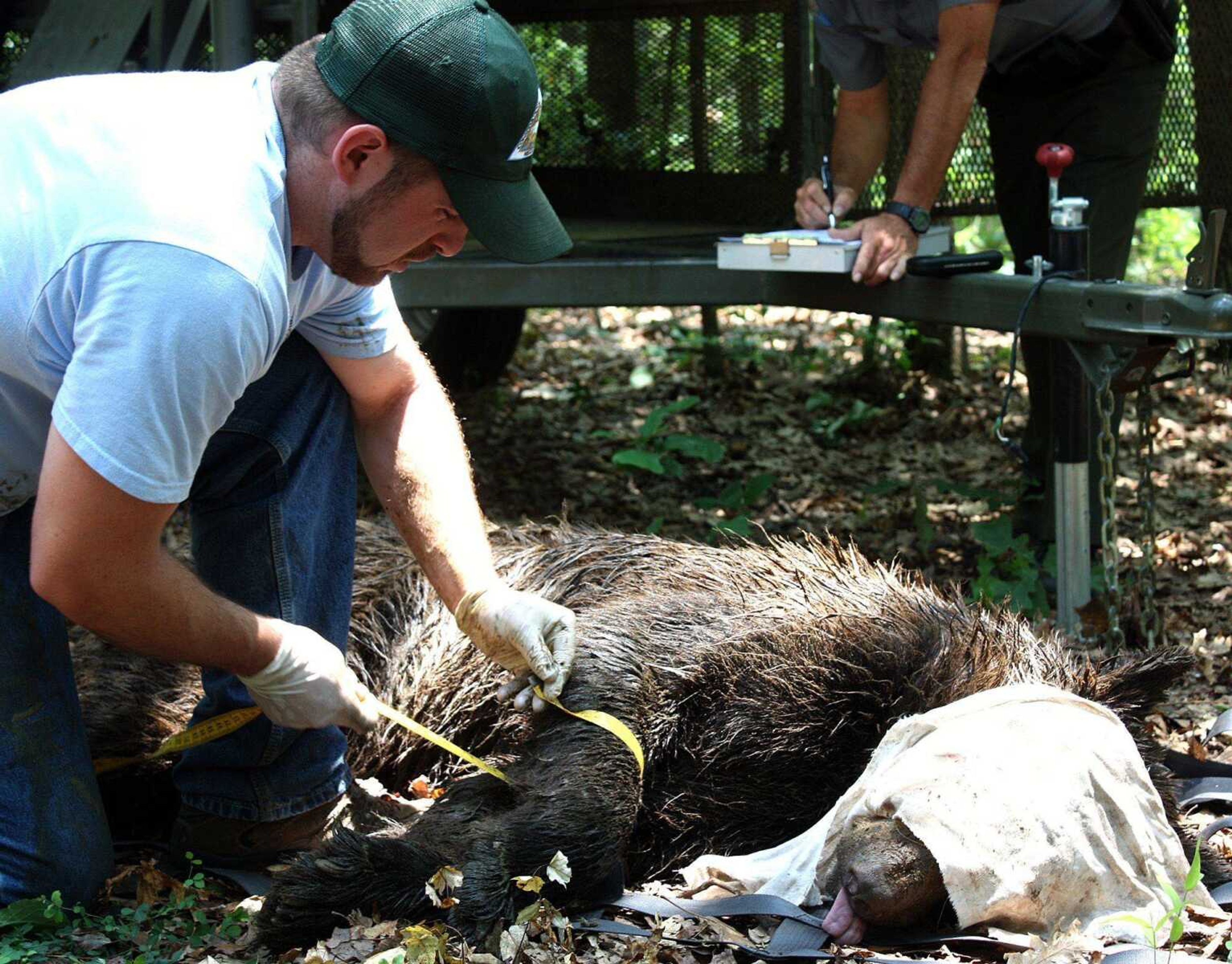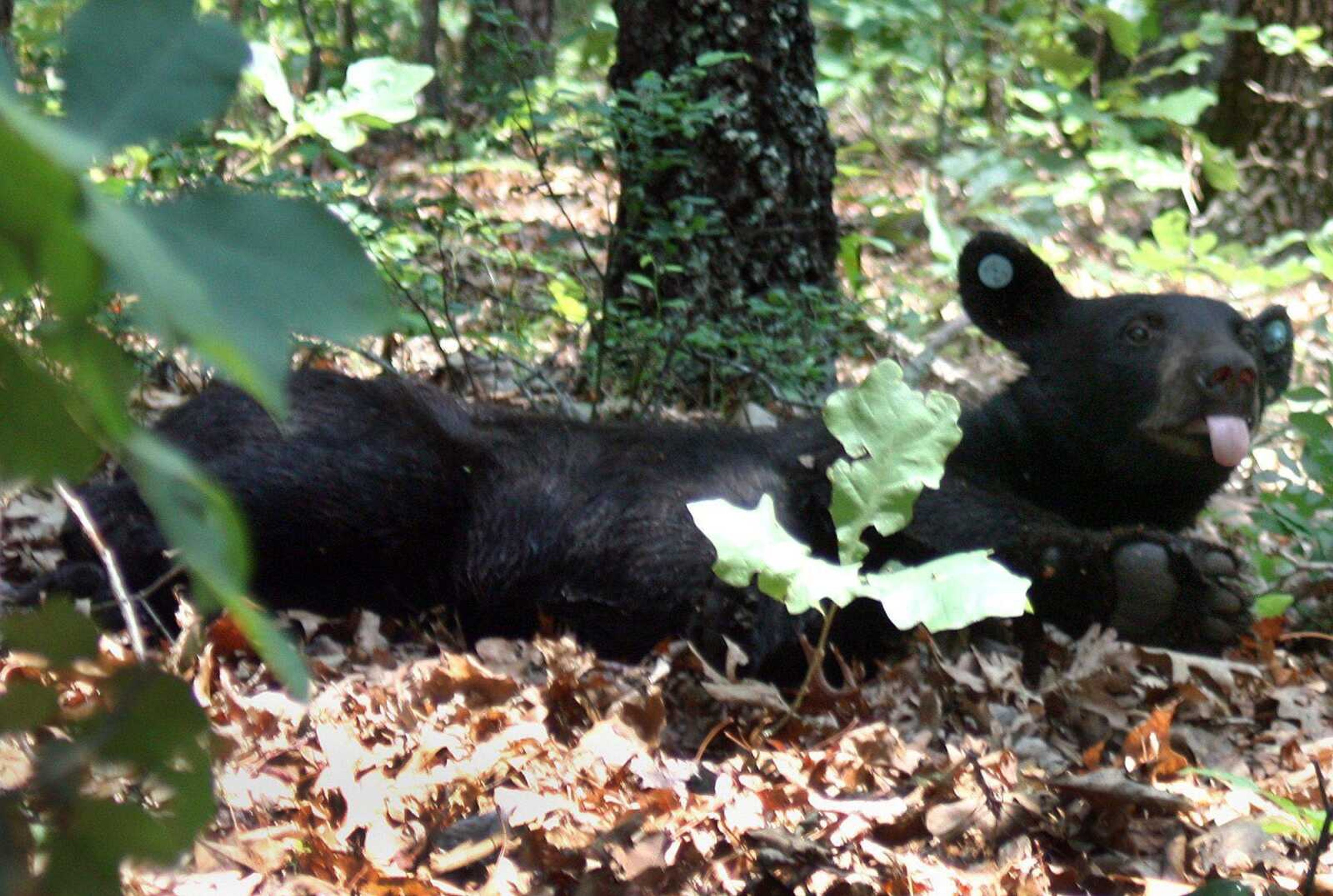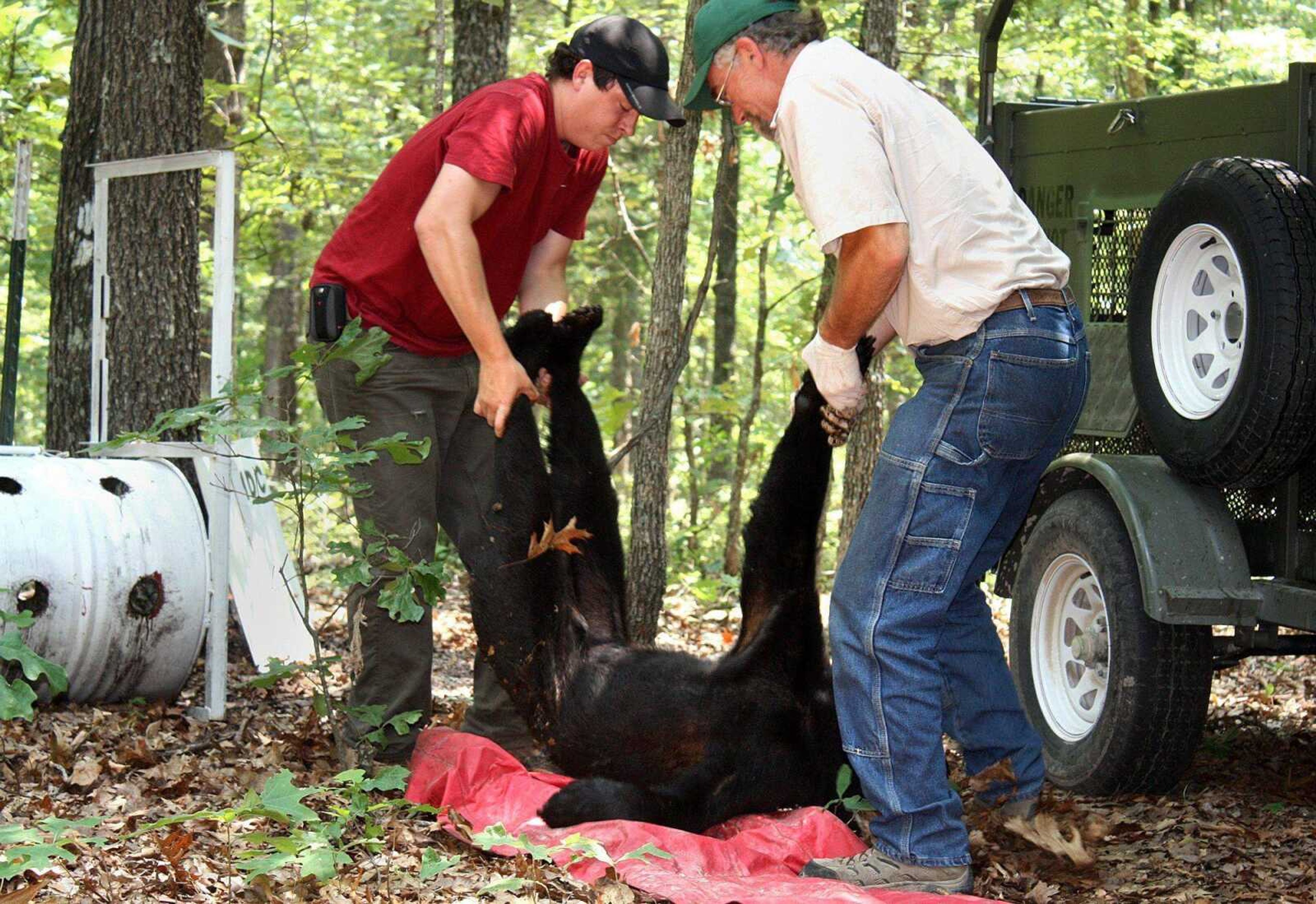Black bears may have never left Ozarks, Department of Conservation study suggesting
The 275-pound male is Jeff Beringer's third bear of the day. Lying six feet away in the wooded remoteness of northern Oregon County is bear No. 4, a 130-pound, glossy-coated subadult black bear. Waiting for Beringer a few miles down the rutted dirt track road is bear No. 5...
The 275-pound male is Jeff Beringer's third bear of the day.
Lying six feet away in the wooded remoteness of northern Oregon County is bear No. 4, a 130-pound, glossy-coated subadult black bear. Waiting for Beringer a few miles down the rutted dirt track road is bear No. 5.
That, the Missouri Department of Conservation resource scientist said, is a good day.
Since May, Beringer and his team have trapped 19 black bears as part of a three-year project that covers all of southwest and a significant chunk of Southeast Missouri.
Ursus americanus is listed as "rare and uncommon" on the department website, a status the once-abundant species has borne since the 1850s. By the 1930s, black bears were thought to be extirpated from Missouri. But Beringer's work, done in conjunction with Mississippi State University and the University of Missouri, may be proving that conjecture untrue. There's a chance, Beringer said, that science is telling us a different story.

There's a chance, he said, that black bears never completely left the Ozarks.
In Oregon County, the two male bears have been "tranqed" and removed from baited traps the Missouri Department of Conservation sets up at suspected bear sites. Beringer, who has worked for the department for two decades and has spent the last three years focused on bears here, and his team begin working up the bears. They measure body size, take DNA samples and gather other data that they hope will help determine an estimate for Missouri's bear population as well as uncover details of how and where the animals live.
"We're really starting from scratch. We don't know how many there are, or where they are," Beringer said. Part of the research includes pulling a premolar -- similar to a wisdom tooth in humans -- which can identify the bear's age and, if female, when the bear had cubs.
The Department of Conservation has bear bait sites in more than 15 Missouri counties, including Cape Girardeau, Bollinger, St. Francois, Butler, Madison and Wayne. Each site is monitored for bear activity. When there's definite sign of a bear using the site, the department sets up trail cameras, followed by a barrel trap or leg snare, luring the bear in over a succession of nights.
The day after a bear is trapped, Beringer and his team arrive to collect data, first tranquilizing the bears, analyzing them, tagging their ear for identification, fitting a tracking collar around their neck, and then ensuring the bears awaken and move on without harm.

The collars are designed to stay on for 18 months, and Beringer hopes the team will be able to use them to track bears to their winter dens and observe cubs later this year.
Bears in Missouri do not actually hibernate, said A.J. Hendershott, an outreach and education supervisor with the Department of Conservation's Southeast Region. They enter a deep sleep state, which differs from hibernation by body temperature. Hendershott has been tracking the progress of the bear project throughout the state as reports of animal sightings grow in Southeast Missouri.
"The public interest in Missouri bears has grown in recent years," Hendershott said. "We need to know how many bears there are, where they're going, and why."
From that, the department plans to create a management plan for the growing population.
Part of the department's goals are to educate the public about bears -- their diet, their habits. It's what the department calls being "bear aware." A key aspect is to avoid attracting nuisance bears, those that have identified humans as a food source.
"Most of the time, those situations can be avoided if you work with your conservation agent," Hendershott said.
He said that while the animals may be large -- up to 900 pounds, -- black bears in Missouri are not a danger to humans.
"Their diet is 90 percent vegetable," he said. "Berries, leaves, ants. They may eat carrion at certain times of the year."
The Department of Conservation is relying on tips from the public to identify bear activity and establish bait sites. Many of the bait sites are on private land, and Hendershott said local landowners have been cooperating with the project because they're just as interested in learning more about the animals.
Not all from Arkansas
Along with the traps, the project includes setting out hundreds of hair snares -- 20-inch rings of barbed wire around trees -- to collect hair samples from passing bears, Beringer said. And it's the results of that DNA and the DNA collected from the trapped bears that have the team rethinking where Missouri's bear population came from.
In the 1960s, Arkansas implemented a reintroduction program for black bears. The increase in Missouri's population of black bears has been attributed to northern migration of bears from that program. Subadult male bears are pushed out of their maternal territories, forcing them to seek new territories. In doing so, the bears may move 200 miles away, Beringer said. It's how black bears avoid inbreeding.
As the population has grown, the bears have made further inroads into Missouri. But the recent DNA testing shows that the Arkansas bears aren't the only bears in Missouri. Some of the genetics gathered can't be genetically typed back to the Arkansas bears, Beringer said.
"One possibility is that they were here all along," he said. "I can't say that with all confidence, but that's what the science seems to be telling us."
Hendershott said the Department of Conservation began receiving reliable reports of bear sightings in the 1980s, and the number of reports has grown exponentially in the last 10 years. The current trapping is a first for the southeast region; southwest counties began the trapping program last fall. The project will continue for three years -- two years for research and the final year to analyze data and compile results, Beringer said.
"Folks will have encounters with bears. It's cool to see a bear, to watch it," Beringer said. "But do not let them access to food on your property. Make it a negative experience for the bear."
Connect with the Southeast Missourian Newsroom:
For corrections to this story or other insights for the editor, click here. To submit a letter to the editor, click here. To learn about the Southeast Missourian’s AI Policy, click here.










